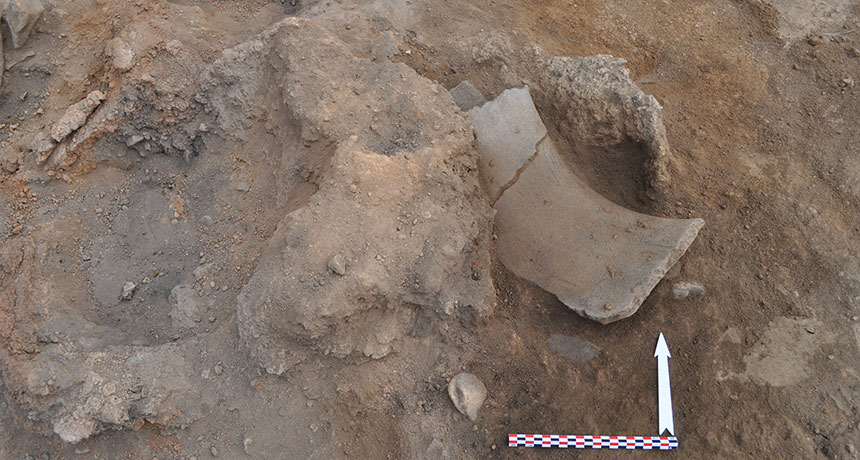Ancient Europeans may have been first wine makers

Bottoms up, from the distant past. Thanks to a new method of analyzing the chemicals in liquids absorbed by clay containers, researchers have uncorked the oldest solid evidence of grape-based wine making in Europe, and possibly the world, at a site in northern Greece.
Chemical markers of red wine were embedded in two pieces of a smashed jar and in an intact jug discovered in 2010 in the ruins of a house destroyed by fire around 6,300 years ago at the ancient farming village of Dikili Tash.
After successfully testing the new technique on replicas of clay vessels filled with wine, then emptied, the scientists identified chemical markers of grape juice and fermentation in clay powder scraped off the inner surfaces of the Dikili Tash finds. None of the vessels contained visible stains or residue, researchers report online May 24 in the Journal of Archaeological Science.
Remains of crushed grapes found near the ancient jar shards and jug had already indicated that Dikili Tash farmers made wine or grape juice, say chemist Nicolas Garnier of École Normale Supérieure in Paris and archaeobotanist Soultana Maria Valamoti of Aristotle University of Thessaloniki in Greece.
Previous reports of ancient wine have largely relied on chemical markers of grapes but not the fermentation necessary to turn them into wine, leaving open the possibility that containers held grape juice. The “juice versus wine” conundrum applies to roughly 7,400-year-old jars from Iran (SN: 12/11/04, p. 371), Garnier says.